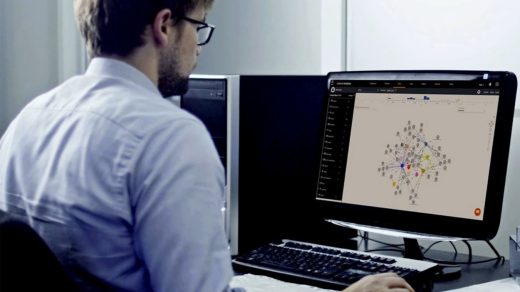Cellebrite is donating its AI investigative tools to nonprofits to help find missing children faster
John Walsh, advocate for missing children and longtime host of “America’s Most Wanted,” said he feels outmanned by criminals all the time—especially in the courtroom.
“I say to myself, ‘My god, the lawyer for this dirtbag predator is smarter and more sophisticated than the cops are’,” the cofounder of the National Center for Missing & Exploited Children told the Associated Press. “They don’t really know the technology.”
Human traffickers and sexual predators often use high-end technology and increasingly take advantage of encryption to protect the details of their crimes, Walsh said. And even if they didn’t, law enforcement officials, especially in smaller cities and towns, lack the budget and the access to the technological tools that would speed up the investigation and aid in the prosecution of the offenders.
Cellebrite DI, Ltd., wants to change that. The provider of digital tools that help law enforcement and private firms find and follow investigative leads on Friday launched “Operation Find Them All”—an initiative where the firm will donate its technology to nonprofits that help find endangered children, including the National Center for Missing & Exploited Children and the nonprofit The Exodus Road, which fights human trafficking around the world. The NASDAQ-traded company—which reported revenue of $85 million for the third quarter of 2023, up 17% year over year—will also make a financial donation to those organizations, as well as Raven, a political nonprofit that raises awareness of the threat of child exploitation online.
Yossi Carmil, Cellebrite’s CEO, said the FBI had nearly 360,000 cases of missing children in 2022, while the National Center for Missing & Exploited Children received more than 32 million reports of suspected child sexual exploitation that year. Knowing that his company had the technology that could help children in trouble, Carmil said he felt Cellebrite had to do what it could.
“We are the biggest admirers of law enforcement,” Carmil said. “However, they are understaffed, underequipped, and, at any point of time, regardless of how much the government will give them, they are under constraints. They always need to do more with less.”
Kent Nielsen, digital forensic investigator for the Brazoria County Sheriff’s Office in Texas, said his department currently uses Cellebrite technology to process data gathered from cellphones as well as its AI-driven software to analyze the data to find potential leads.
“The system really helps us with doing our jobs faster,” said Nielsen, adding that one smartphone could contain more than 250,000 images to process. Rather than having an investigator look through those images and sort them, Cellebrite’s Pathfinder software can handle it, while also linking them to locations, as well as other data from other smartphones or other cases.
The Brazoria County Sheriff’s Office used the Cellebrite technology last weekend as part of the multiagency Operation Interception to help rescue children being trafficked, as many visited the area due to the College Football Playoff national championship held in nearby Houston. Nielsen said seven girls were rescued and 23 arrests were made.
Matt Parker, cofounder of The Exodus Road, said he saw what a difference one piece of Cellebrite technology made in investigating the human trafficking of Rohingya Muslims in Malaysia in 2015. Through “Operation Find Them All,” Parker hopes to bring Cellebrite technology to other countries, even if the governments have previously not prosecuted human trafficking cases.
“When you fight corruption globally, you have to have an overwhelming amount of evidence that is difficult to sweep under the rug,” Parker said. “You have to make the case a slam dunk, and I’m telling you, in all the experience I have had over the past 13 years . . . in hundreds of cases of human trafficking, when we leverage Cellebrite technology and we introduce that technology into the judicial process, the success level is significantly higher.”
Walsh said he hopes that the increased access to technology can help level the playing field against those preying on children.
He said the National Center for Missing & Exploited Children employs about 450 at its Virginia headquarters and has five other branches around the country. In 2022, it received more than 110,000 calls about missing children—an increase of 16% from the previous year.
“We should have 2,000 people working on those calls,” Walsh said. “We should have 100 branches across the United States.”
Experts say that not only are there now more human traffickers, but they are also technologically savvier.
“The pimps of the day, the gangs of today are way smarter than the sex trafficking gangs of the past,” Walsh said. “They’re way more dangerous. They move faster. They have encrypted files. They’re smart. And law enforcement just can’t keep up with them.”
Cellebrite’s Carmil said government has the responsibility of funding law enforcement so that they can better protect children and quickly search for those that are missing.
However, he said corporations and nonprofits need to do what they can as well.
“I’ve got kids. John (Walsh) has kids. We are also citizens and parents,” Carmil said. “This is a holy mission. It goes beyond the money.”
By Glenn Gamboa, Associated Press
Fast Company – technology
(17)



